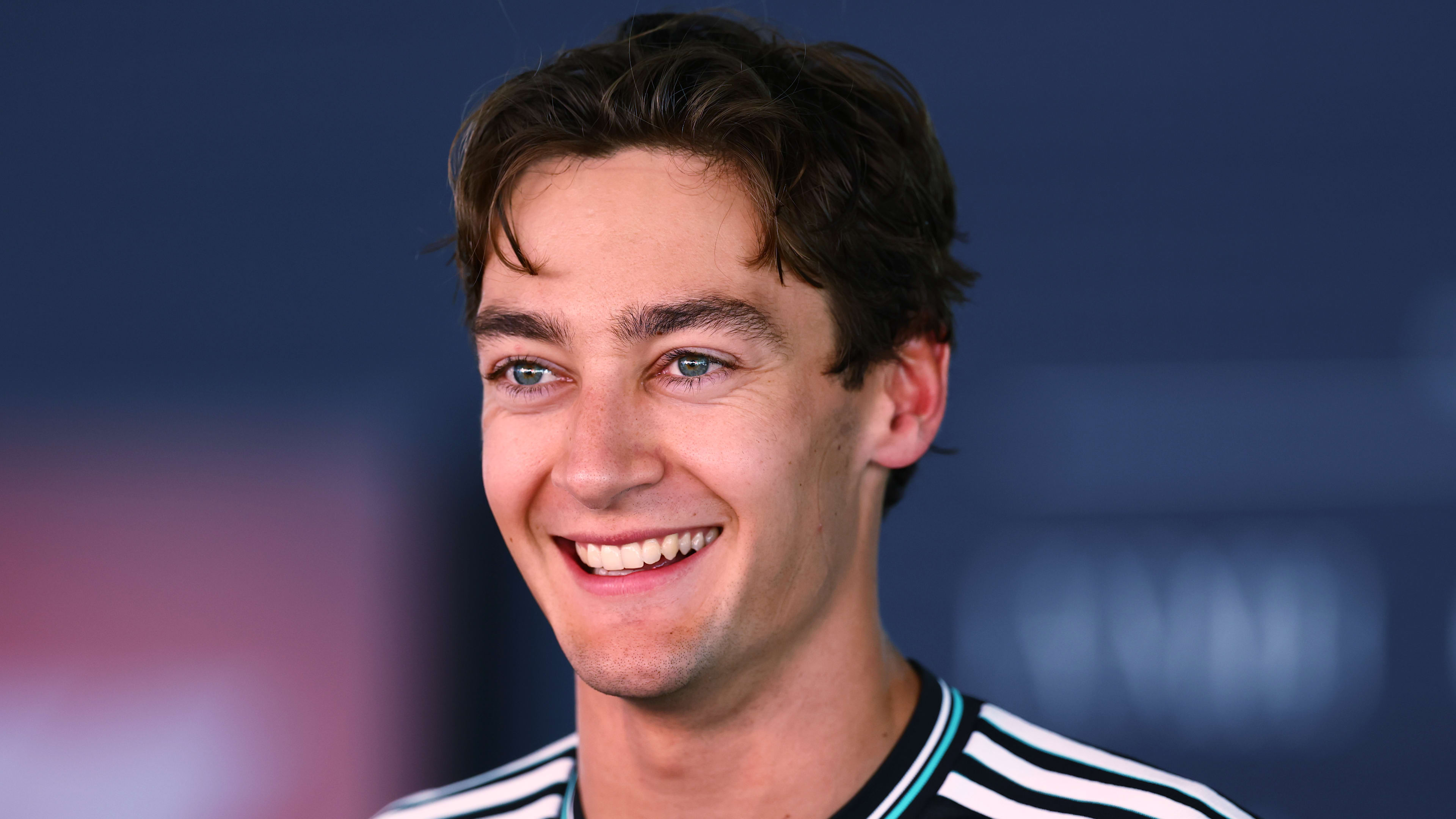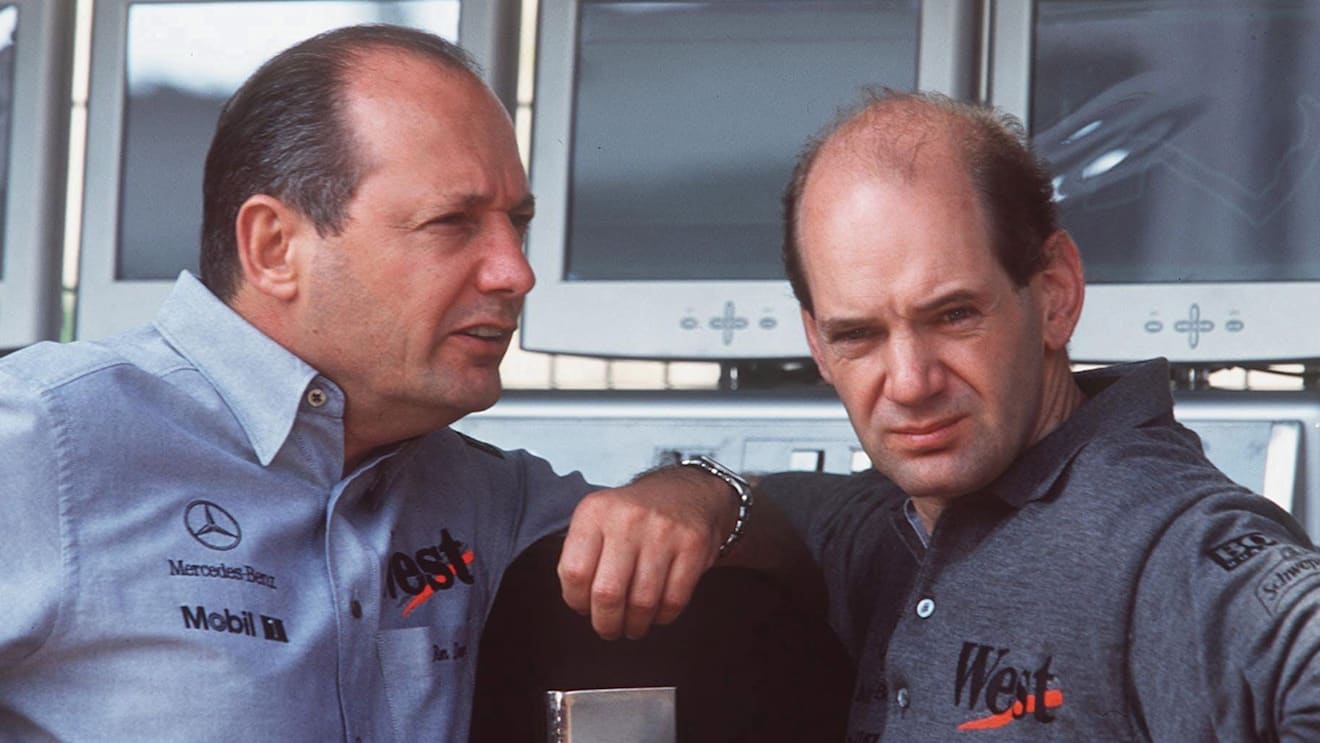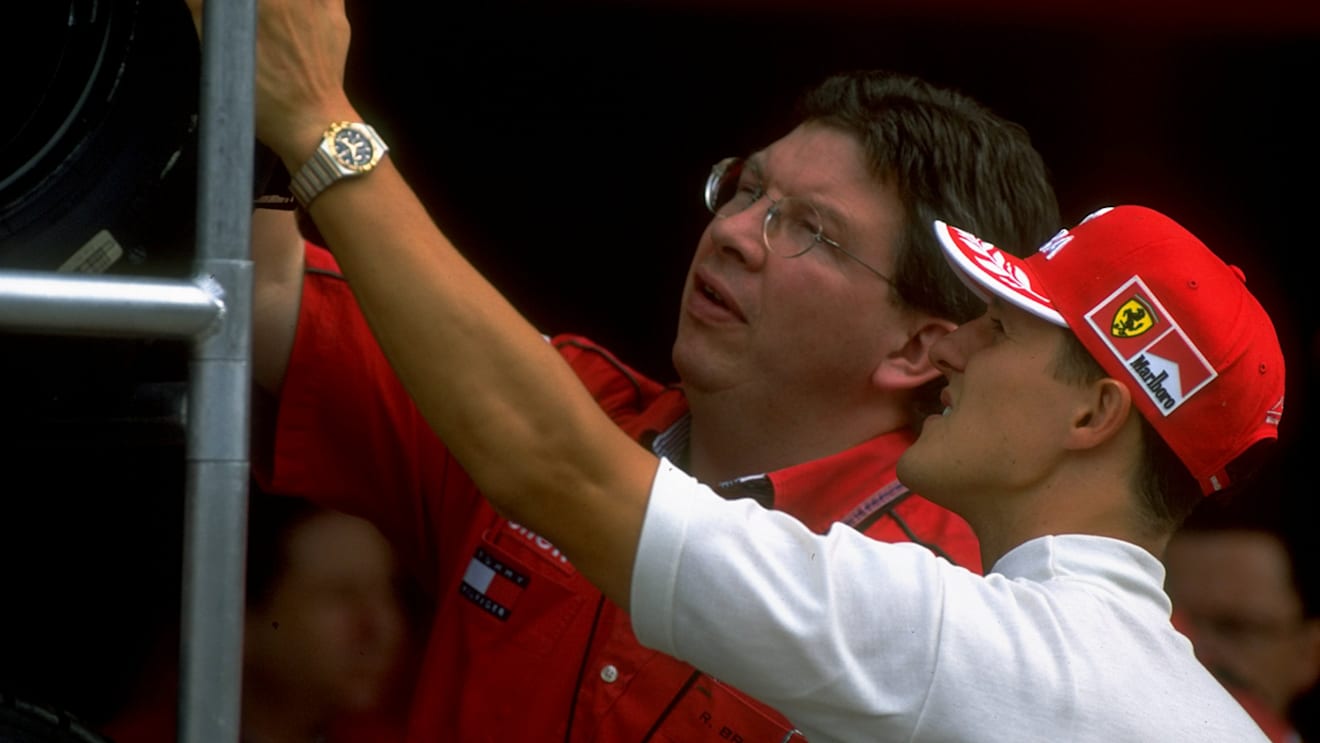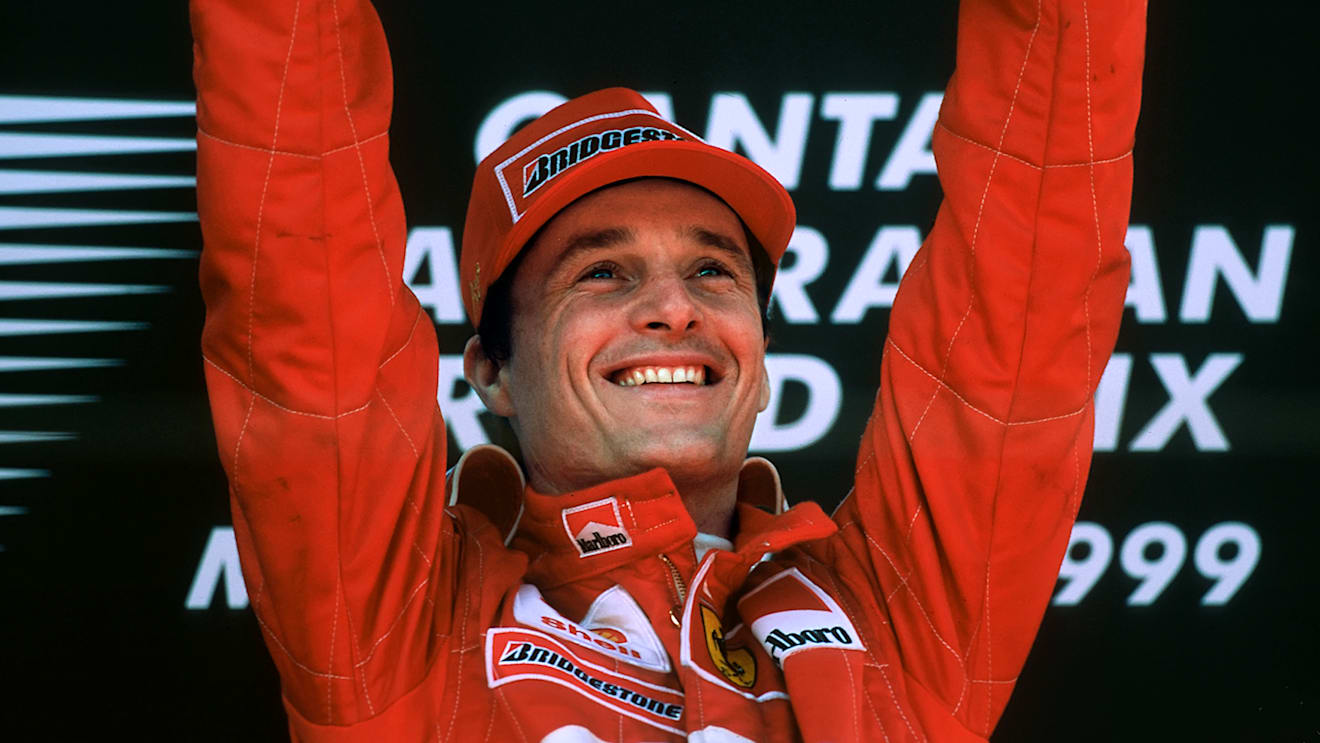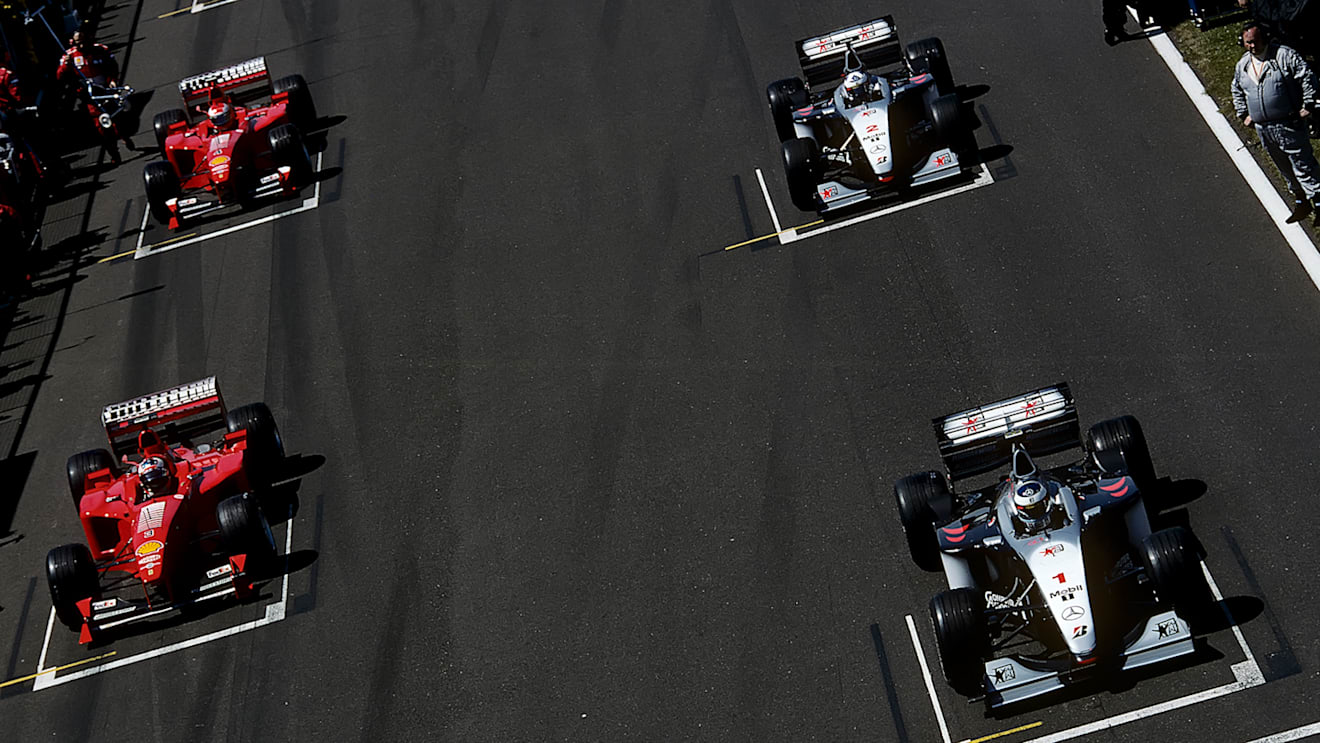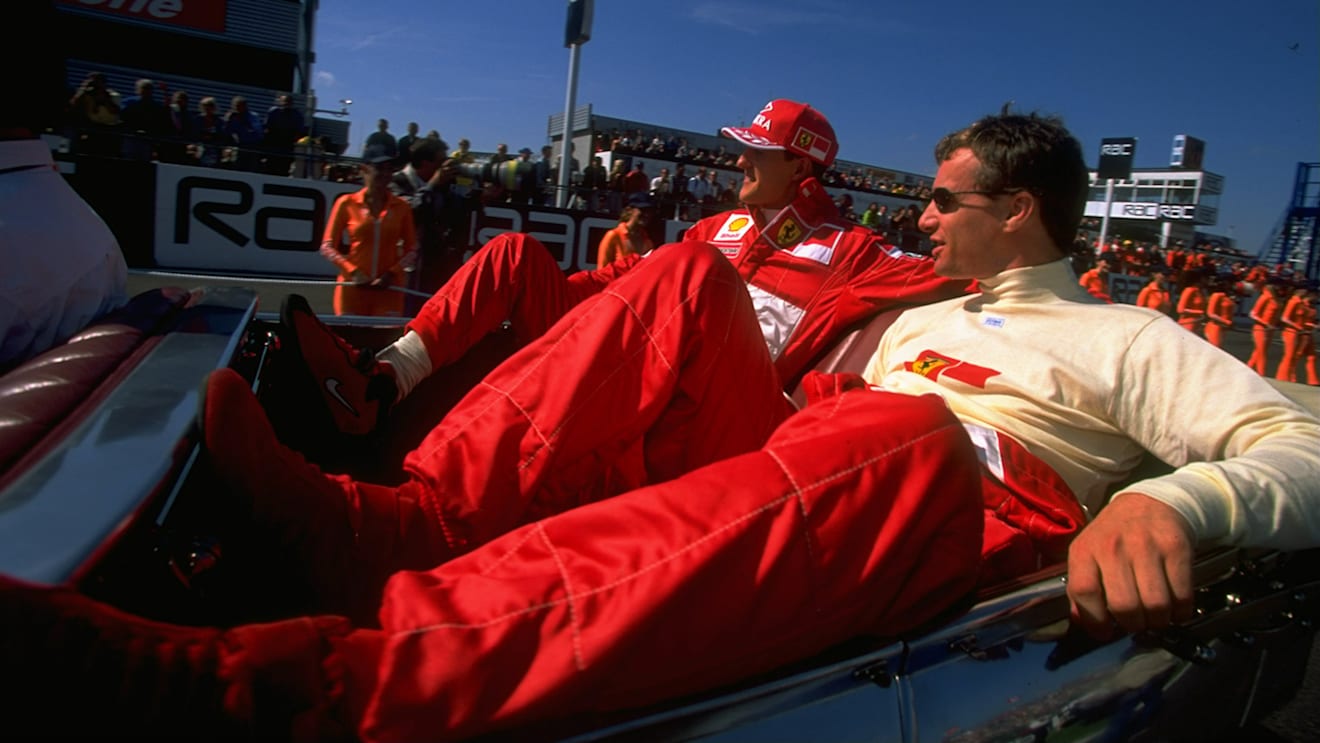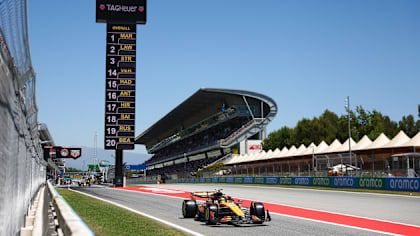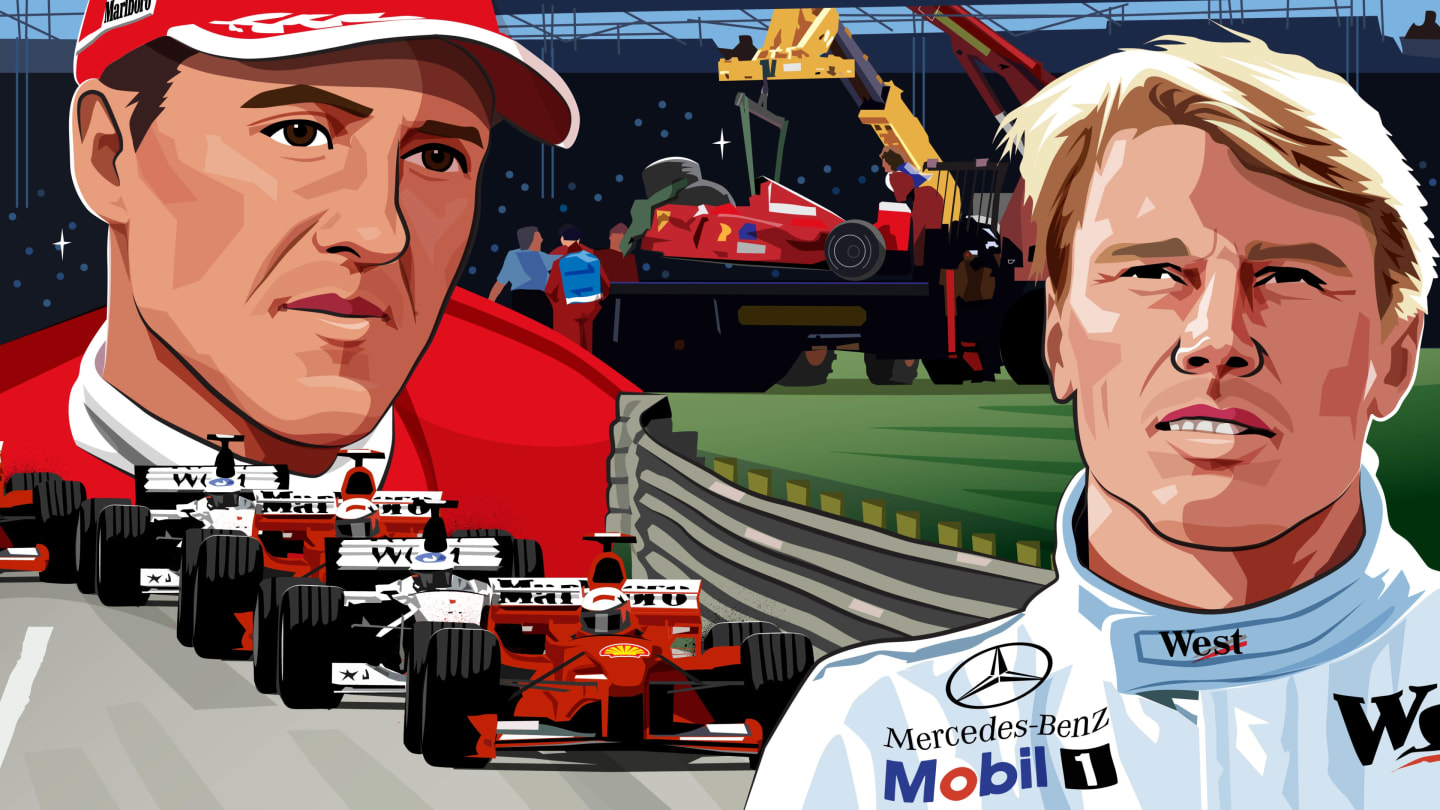
Feature
1999 ORAL HISTORY: Part 1 – McLaren vs Ferrari, Hakkinen vs Schumacher, and drama at Silverstone

Share

Some 25 years have now passed since a drama-filled Formula 1 campaign that remains etched in the memories of drivers, team members and fans. A thrilling battle between giants McLaren and Ferrari, Michael Schumacher being sidelined by a heavy crash (on this precise day), underdog teams triumphing and the title getting decided at the very final race – the 1999 season had twists and turns aplenty. In a special reflective feature mini-series, we caught up with a host of personalities involved in F1’s 50th year for a special trip down memory lane. Here’s the first instalment…
McLaren versus Ferrari – the rematch
F1 fans had been offered a sign of things to come in 1998 when McLaren and Ferrari, and Mika Hakkinen and Schumacher, went head-to-head for title glory – the Woking operation and their Finnish driver emerging victorious. At McLaren, with a design department led by the already highly respected Adrian Newey, the team were approaching the latest peak in their illustrious F1 history, but at Ferrari, a rebuilding phase under Jean Todt and Ross Brawn’s leadership was yet to bear the ultimate fruit, with the Maranello force last winning the constructors’ title in 1983 and the drivers’ crown in 1979. The 1999 season served as a rematch, with Hakkinen and McLaren looking to continue where they left off, and Schumacher and Ferrari hoping that a fourth campaign together would bring the next step.
Mika Hakkinen, McLaren driver: “When I became world champion, my confidence level went up in a big way… I had huge confidence. I remember I had a very busy winter with marketing work. Without sponsors, there is no racing, so we needed to work hard. When you won you had to work nearly harder with the sponsors than when you were losing! But my confidence was high and, at the very first test of 1999, I went into the paddock, I looked at the mechanics, they looked at me with a smile on their faces, and they were like, ‘Come on, let’s go for it’. We didn’t have to say anything, it was just the impression on our faces that we did it and we could do it again.”
BEYOND THE GRID: Mika Hakkinen on Schumacher, Senna and recovery from injury
Mark Arnall, Mika Hakkinen’s performance coach: “It was a big fight between Mika and Michael in 1998. I think after you’ve been in that sort of situation, and you’ve won the championship, there’s always that expectation that as long as the car’s good, you’re going to carry on with that momentum. I think from a preparation point of view, we didn’t really do anything differently. The car was still great in 1999, Adrian was obviously still working with the team [as Technical Director], and [the whole performance] was just an evolution of ‘98.”
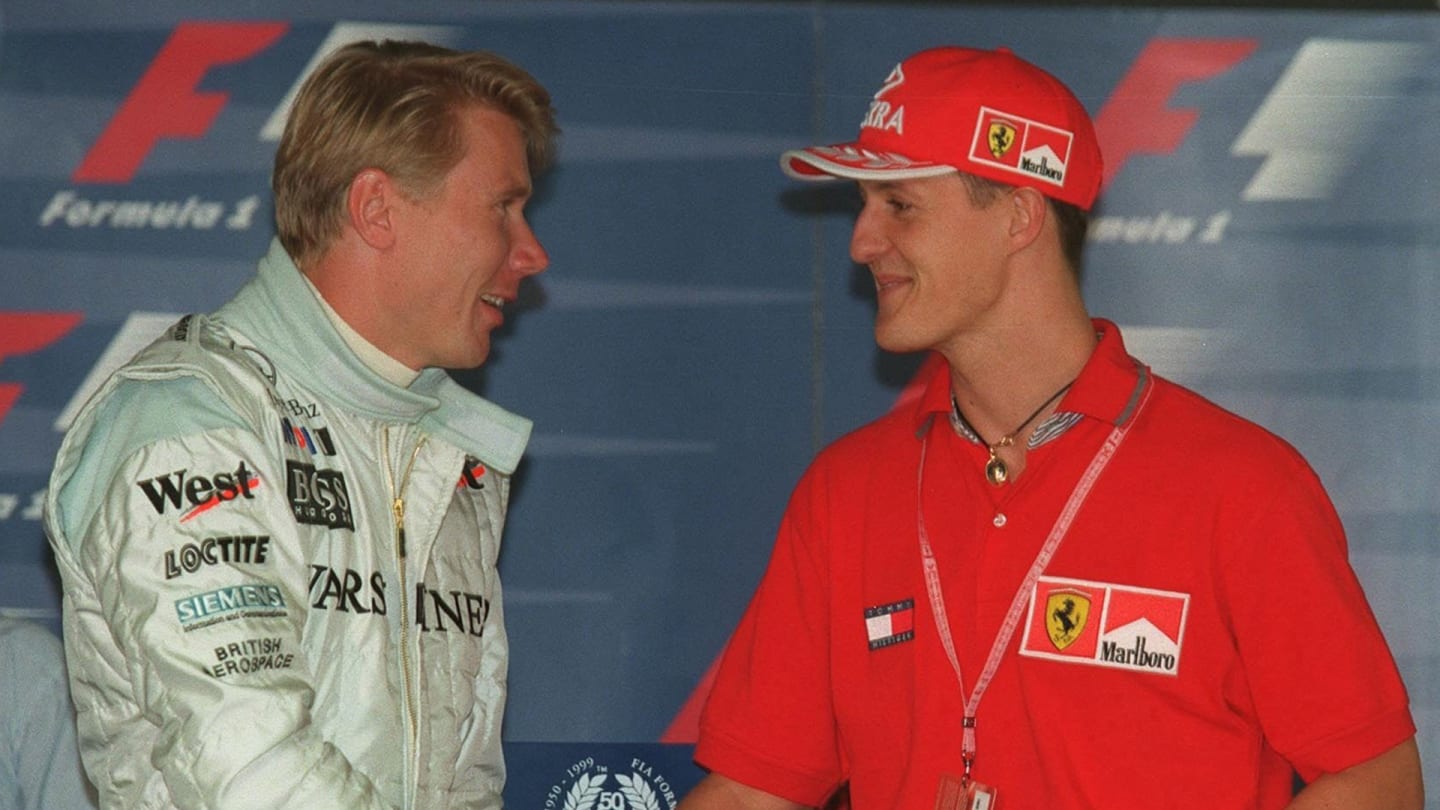
After their initial battle in 1998, Hakkinen and Schumacher were preparing to go head-to-head again
Matthew Jeffreys, Head of Vehicle Design, McLaren: “We were following on from a great year with Mika. I was just enjoying working with very motivated people like Adrian, [Chief Designer] Neil Oatley, and the whole team. Obviously, we’d designed a number of cars, and we prided ourselves on the engineering, so we wanted to do all that we could. Everybody was focused. We knew Ferrari had been getting stronger all the time – Schumacher and Ferrari were a formidable opponent. To beat them was always something that we relished.”
Marco Fainello, Head of Vehicle Dynamics, Ferrari: “McLaren were quite established by that time, while we were quite a new team with a new car, with new people. It was conscious work through the years, managed mainly by [Team Principal] Jean and [Technical Director] Ross – they really wanted to build the team. Before going to Australia in 1999 we had some problems with bad weather in Italy, so we could not hold our tests. When we arrived, we had not been sleeping much in the previous month. We introduced night shifts and had people who were alternating, so it was really a challenge for all the people in the team.”
Willem Toet, Head of Aerodynamics, Ferrari (until late-1998): “It was a really interesting time at Ferrari. When Ross and [Chief Designer] Rory Byrne joined, it was the first time that Ferrari had given any technical leader complete control. They gave Ross control – it was the only way they could get him – over the technical side of the car. He was able to channel the energy that the Italians have, stop people doing daft things, and give them organisation and direction.
“Part of my job had been to take the aerodynamics out of England and bring it into Italy. Up until that point, we had one wind tunnel in Maranello and one in Bristol. We froze the 1999 chassis in about August or September of 1998, because it’s the longest lead time item. I was still involved in that, and the 1999 car was the first time when we didn’t have to do any correlation work – the wind tunnel got built and was fully ready for it.”
1 / 2
McLaren fast but fragile, Ferrari playing catch up
When teams’ 1999 challengers hit the track, McLaren proved to be the class of the field performance-wise with an MP4/14 that was – as Arnall mentioned – an evolution of its double title-winning predecessor amid relatively stable regulations. After lighting up the timesheets in testing, Hakkinen and team mate David Coulthard produced an utterly dominant display during qualifying for the season-opener in Australia, with nearest rival Schumacher 1.3 seconds away from pole position.
However, while McLaren had another rapid car on their hands, efforts to keep the competition at bay – which included aerodynamic tweaks and weight being shifted from the rear of car after a fourth groove was added to the front tyres for safety reasons – came with some unwanted side-effects. Ferrari, on the other hand, faced the challenge of making an initially solid but unspectacular F399 quicker.
It was a theme of the early Grands Prix, with Hakkinen storming to pole position for five races on the bounce, only for technical issues and mistakes to open the door to Ferrari. Indeed, after McLaren’s eye-catching qualifying display, Eddie Irvine grabbed a surprise victory at Albert Park in a race full of drama, while Schumacher took advantage of Hakkinen’s crash at Imola – a screech from late, legendary commentator Murray Walker adding to the moment for British television viewers – and made it three different winners across the opening three rounds.
Matthew Jeffreys: “Adrian is brilliant. He goes to the nth degree to get every little bit of performance from every area of the car, especially on the aero side of things; minimising the drag for any given level of downforce. In doing that, he pushes people, and he pushed us, into areas which were a little bit outside of our comfort zones, so he made us consider things and do things which we wouldn’t necessarily consider doing. But it was quite typical with Adrian that we did have a few teething problems and everything was absolutely on the minimum [limit]. At the very first test there were some slight concerns, and there was talk of doing the first few races with a modified MP4-13 chassis, but that never happened.”
Marco Fainello: “When I saw the performance of McLaren [at the start of the season] I didn’t expect such a gap; I could not figure out how it was possible. I think the year after I knew that each F1 car is never the perfect car; it’s the car you’ve been able to make in the time you have, but if you have more time, you can make it two seconds, three seconds faster. Australia is quite particular as well, the asphalt is not very smooth. I remember we did some mistakes that race for qualifying and the preparation – we were a bit frantic in our preparation.
1 / 2
“I don’t remember how many tests we did [as the season went on]. We were always travelling, never sleeping. We had private planes to take us everywhere. Due to weather forecasts, we were changing place from one day to the other, then moving around Europe from Italy to Spain – all depending on the weather. We had a dream [to succeed] and we were very focused only on that. Everyone trusted the bosses.”
David Tremayne, F1 journalist: “We were all pleased to see that Mika had finally got his championship. It was odd start to the 1999 season, though, with Eddie winning the first race. It was nice to see him winning, but I don’t think anyone had expected that to happen. We knew that Eddie wasn’t going to beat Michael in a straight fight. It was clearly going to be between Mika and Michael again once things had settled down a bit, which is what everybody wanted. They were the two best guys out there, no question. It began as quite a back-and-forth season, which is always a good sign.”
WATCH: Legends of F1 – Jordan, Ferrari and Jaguar racer Eddie Irvine
Mika Hakkinen: “While we had a bloody quick car, it was on a knife-edge. You felt all the time, ‘This is it, if I increase my speed through the corner maybe 5-10 km/h more, I will lose control’. It was nearly impossible then to be able to handle that. When I experienced these kinds of feelings in the first race, I was like, ‘Oh, s***’. Even though we were quick like no tomorrow – we were so fast – I knew that mentally and physically I was heading for a very demanding season.
“The mental stability, the mental strength, the focus of performing at the highest level is very demanding. I was doing that already when I was a kid, but when you are in F1 you have a lot of media work, a lot of marketing work, a lot of people around you all the time, so to keep that focus level is very challenging. It helped me to go in a room [before driving] and put myself in order – a level of maximum concentration, understanding the car, knowing the conditions of the track. When you sat in the car, you didn’t have to think about anything, basically, as everything had already gone deep in the brain.”
1999 flashback: Hakkinen crashes out in San Marino
Mark Arnall: “I used to do quite a lot of visualisation work with Mika before qualifying where we would go in a dark room with him sitting in the driving position, shutting his eyes and just driving his perfect lap. He would go through what part of the corner he was hitting, what speed he was doing, what gear he was in, and then he’d tell me the lap time at the end of that exercise. Sometimes the lap times were so much quicker than we’d been in practice and he was 85 to 90% of the time within a tenth of what he’d said he could do. For me, that was always one of his massive strengths.”
Schumacher’s dramatic leg-breaking crash
As the season wore on, Hakkinen and Schumacher again marked themselves out as the main championship contenders, with steady improvements from Ferrari enabling the latter to break the former’s pole stranglehold at the Circuit Gilles Villeneuve in Canada, only to end his race in the so-called ‘Wall of Champions’. However, a couple of rounds later at the British Grand Prix, another crash involving Schumacher would flip the title race upside down.
When the German attempted to make up for a slow start and pass team mate Irvine on the run to Stowe on the opening lap, just after a red flag was thrown for stalled cars on the grid, his brakes gave up on him and he dramatically slid into the barriers. What followed were some concerning moments as the watching world waited for word on Schumacher’s condition. When it eventually arrived, there was good and bad news – while he had escaped wide-ranging injuries, a broken leg would put him out of action, and the title race, on the spot.
Louise Goodman, ITV F1 reporter: “We knew straight away that it was a fairly serious accident. You can tell when the blankets go around [the driver]. I remember the hand coming up, which is what everybody’s waiting for, some kind of signal that this guy is okay. As a journalist, that dictates the mode you go into. I tended to be the person who would be on duty outside the Medical Centre, which was where you would go in that day and age to wait for ‘Prof’ [Sid Watkins, FIA Formula 1 Safety and Medical Delegate] to come out and give you the line on how a particular driver is doing. But I think whenever there’s been a big accident – it was then and it is now – the whole sport has a little bit of an intake of breath. It’s a reminder that people can get hurt and worse in this sport.”
1999 flashback: Schumacher breaks his leg at Silverstone
Enrico Zanarini, Eddie Irvine’s manager: “I think for us, the season started at Silverstone. It had always been clear in Ferrari that Michael was number one and Eddie was number two, even if it was not written in the contract. Michael was such an incredible driver, but Eddie had his chances here and there. Especially the 1999 car was better for Eddie; he was struggling with the previous cars.
“That day at Silverstone, Eddie had a better start and, when they came to Stowe, he didn’t let Michael pass in a way that… He was going for the corner and he braked very late. With Michael, something under braking went wrong and he went straight. That’s when we started the adventure, of course, because soon after we knew that Michael had broken his leg and he was going to be out for a few races.”
David Tremayne: “The Silverstone incident was really interesting. There were two things I thought about that. One, I think Ferrari were late telling Eddie and Michael that there was a red flag, and two, I think Michael was in a real state because Eddie was in front of him and not showing any signs of moving. I really do think he was angry at that moment. That’s when Michael made a little bit of an optimistic move when he didn’t even need to be doing it and went off and damaged himself. That turned the whole thing on its head.”
Marco Fainello: “The accident was [caused by] a problem with the bleeding of one [brake] caliper on the rear. I was in the remote garage, not at the track, and I saw the scene on TV. Michael made some comment on the radio, but he was not speaking at the beginning, so we were worried for him. On the video you could see the car on the side view that it was braking heavily with the front tyres locked and the rear tyres still turning. I remember I immediately thought he had a problem with the rear brakes – it was very clear. It could have been because a mechanic forgot to tighten it properly, but I’ve never seen it in any other situation.
1 / 2
“I spoke with Michael one or two months later, because he had some time to recover. He was really, really nervous after the accident. We were at dinner and he said he realised for the first time, for real, that he could have been hurt very seriously. He was not sure what he wanted to do in the future. Mick was born and he had two small children. I remember his wife Corinna was there and she was very important in also trying to understand what to do. For some time, we were not sure Michael was going back to race again – until after Monza, I would say. Then he said, ‘No, no, I’m coming back’.
“He drove in a different way after the accident. I also discussed this with him because I’d been his engineer when he was at the track for the first time with Ferrari. He was always at the limit in the high-speed corners, like 130R at Suzuka, even with used tyres, a damp track and so on, and showing unbelievable control of the car. Eddie was looking at the telemetry and said, ‘I will never even try to do that’. After the accident, I noticed Michael was not doing that anymore. In a lot of other details he started to drive differently and be more cautious, but more analytical also.”
WATCH: The inside story of Schumacher’s phenomenal comeback
Claudio Berro, Head of Communications, Ferrari: “In my role, it was clear that a lot of situations were catastrophic. It was like being head of communications when a plane crashes. Everybody asks what happens, everybody wants an immediate reaction, they need to write [news stories]. Also, if very unfortunately we don’t have internet, we don’t have a different communications system or an agency… Communication was simpler on one side, but more difficult to make a reaction in real time.
“One of the critical points was Michael’s accident. When Michael broke his leg… Okay, there was no big damage… How many people break their legs during the day? On the bike, at home maybe in the bathroom. But for us it was a little bit complicated to explain. I had one friend at Ferrari, a British guy, working in media and communications [for the team]. He was with me at Silverstone and he helped me a lot in this critical situation. With two people it’s easier than one with around 20 TV [crews] and 100 journalists!”
Standings after Silverstone
| Drivers’ | Constructors’ |
|---|---|
| Mika Hakkinen: 40 points | Ferrari: 64 points |
| Michael Schumacher: 32 points | McLaren: 62 points |
| Eddie Irvine: 32 points | Jordan: 31 points |
| Heinz-Harald Frentzen: 26 points | Williams: 19 points |
YOU MIGHT ALSO LIKE

Video HIGHLIGHTS: Relive the Qualifying action as Piastri snatches pole position from Norris in Spain
FeatureF1 Unlocked Max vs McLaren (again) and Hamilton in the hunt – What To Watch For in the Spanish GP

Video WATCH: Ride onboard with Piastri for his spectacular pole position lap in Spain

Video HIGHLIGHTS: Relive the action from FP2 in Barcelona as Piastri heads the timesheets
